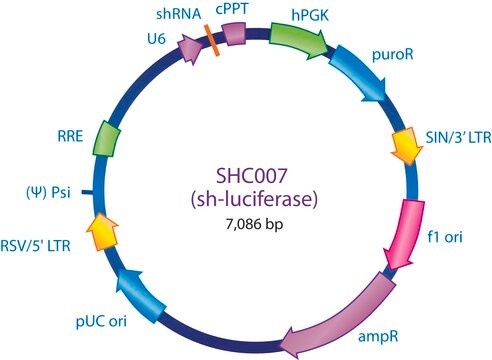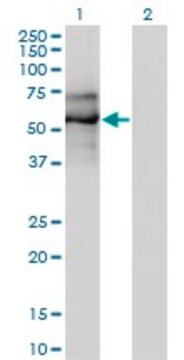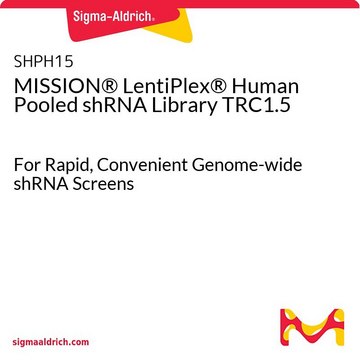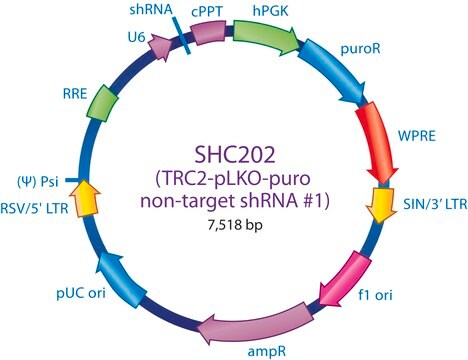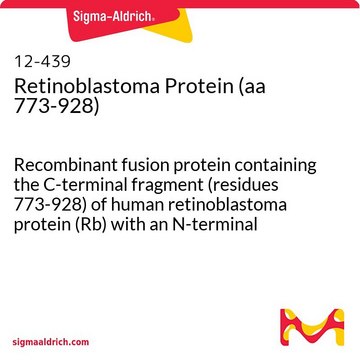SHC007V
MISSION® pLKO.1-puro Luciferase shRNA Control Transduction Particles
shRNA sequence targeting luciferase
Synonim(y):
3355 Kontrolne cząsteczki transdukcyjne
About This Item
Polecane produkty
linia produktu
MISSION®
stężenie
≥1x106 VP/ml (via p24 assay)
metody
capture ELISA: 106 TU/mL using p24
Warunki transportu
dry ice
temp. przechowywania
−70°C
Szukasz podobnych produktów? Odwiedź Przewodnik dotyczący porównywania produktów
Powiązane kategorie
Opis ogólny
The Luciferase shRNA control transduction particles are produced from the sequence-verified lentiviral plasmid, pLKO.1-puro-luciferase shRNA (Prod. No. SHC007). Self-inactivating replication incompetent viral particles are produced in packaging cells (HEK293T) by co-transfection with compatible packaging plasmids. In addition, the control transduction particles are pseudotyped with an envelope G glycoprotein from Vesicular Stomatitis Virus (VSV-G), allowing transduction of a wide variety of mammalian cells. 200 μl of 106 TU/ml (via p24 titering assay) lentiviral particles are provided as frozen stock.
To see more application data, protocols, vector maps visit sigma.com/shrna.
Zastosowanie
Informacje prawne
Kod klasy składowania
12 - Non Combustible Liquids
Klasa zagrożenia wodnego (WGK)
WGK 3
Temperatura zapłonu (°F)
Not applicable
Temperatura zapłonu (°C)
Not applicable
Środki ochrony indywidualnej
Eyeshields, Gloves, multi-purpose combination respirator cartridge (US)
Wybierz jedną z najnowszych wersji:
Certyfikaty analizy (CoA)
Nie widzisz odpowiedniej wersji?
Jeśli potrzebujesz konkretnej wersji, możesz wyszukać konkretny certyfikat według numeru partii lub serii.
Masz już ten produkt?
Dokumenty związane z niedawno zakupionymi produktami zostały zamieszczone w Bibliotece dokumentów.
Klienci oglądali również te produkty
Nasz zespół naukowców ma doświadczenie we wszystkich obszarach badań, w tym w naukach przyrodniczych, materiałoznawstwie, syntezie chemicznej, chromatografii, analityce i wielu innych dziedzinach.
Skontaktuj się z zespołem ds. pomocy technicznej